10 Strengthening Yoga Poses For Moms Who Run
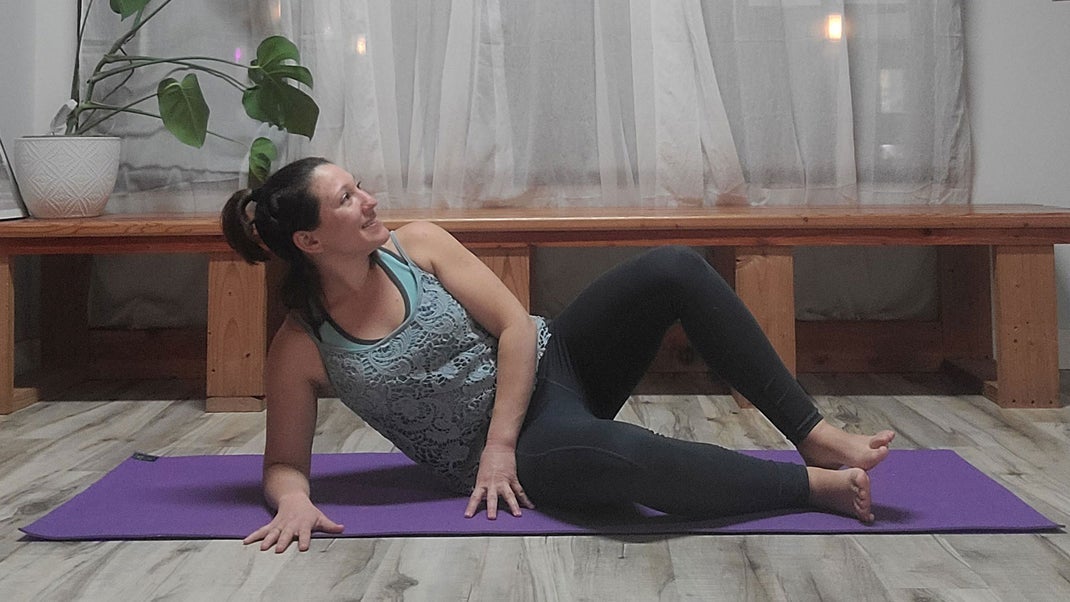
Becoming a mom impacts every aspect of your life—including your physical fitness. Motherhood helped me rediscover my passion for running. Hitting the trail, plus continuing to teach and practice yoga, has helped keep me fit, limber, and nimble, both physically and mentally. These acts of self-care help me find presence and connection with my body, breath, and emotions, even during the most difficult days.
But in order to thrive as a runner, I’ve had to overcome various physical and emotional obstacles that are unique to motherhood. Pregnancy and the postpartum period can wreak havoc on the body and mind. Diastasis recti—a separation of the rectus abdominis—pelvic floor dysfunction, and hyper flexibility, as well as postpartum depression and anxiety, are all common physical and mental changes that can affect mothers’ ability to get their bodies moving.
Luckily, your yoga practice can help build physical awareness and manage stress as you navigate the shifts in your body, heart, and life. I’ve designed the following yoga sequence to help moms who run safely maintain or rebuild their pelvic floor and core strength (during or after pregnancy). This session will guide you through dynamic stretching, keep you strong in multiple directions, and help you recharge and unwind.
A yoga sequence for moms who run
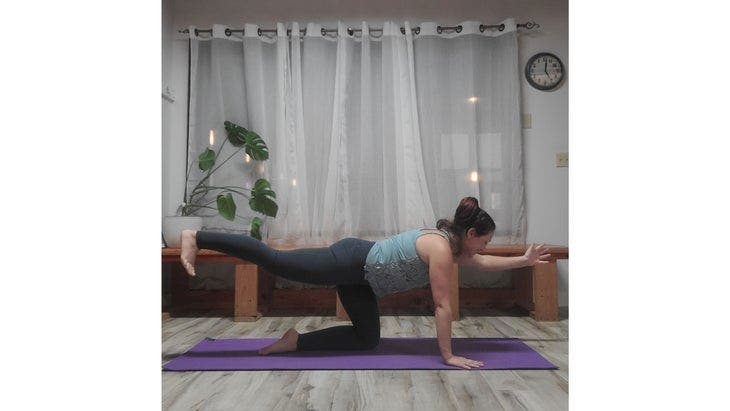
Tabletop Pose, variation
Begin on all fours. Set your wrists under your shoulders, and stack your knees under your hips. Gently engage your core muscles by drawing your belly button upward and inward toward your spine. Extend and lift your right arm forward and your left leg backward.
Bend from your right elbow and left knee, then draw your limbs inward toward the center of your core. Round your spine and tuck your chin into your chest (like Cat Pose) as you hug your knee and elbow in. Your elbow and knee may softly meet each other. Return to start position. Inhale and extend and lift your opposite arm and leg. This is one round. Move through 8 cycles.
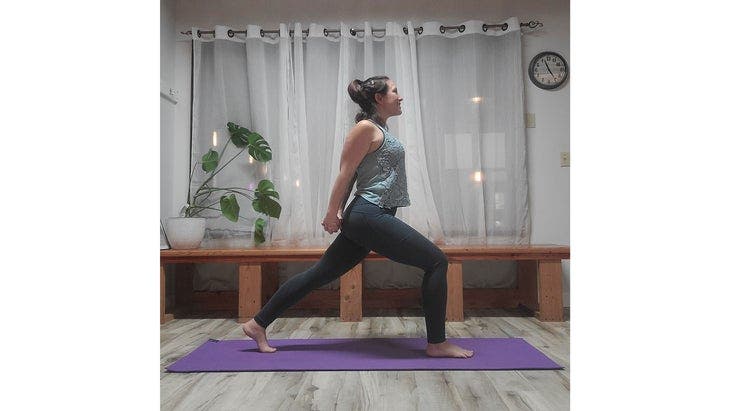
High Lunge, variation
From Tabletop, ground the sole of your right foot. Align your front knee over your front ankle. Extend your left leg behind you and lift your back knee up off the mat. Disperse your weight evenly between your legs. To do this, shift weight into your grounded front heel, and backward through your lifted back heel. Balance on the ball of your back foot, lift your back heel, keeping it in alignment with your back ankle. Tucking your pelvis slightly will give your left psoas and quadricep muscles a stretch.
You can complement your High Lunge with an added chest opening stretch by reaching your hands behind your lower back. Interlace your fingers, and gently draw your palms inward toward each other. (If you can’t comfortably join your hands behind your lower back, then grasp a yoga strap or a belt.) Soften your shoulders downward and back. Hold for 5 full, deep breaths. Repeat on the other side. Return to Tabletop before moving into the next pose.
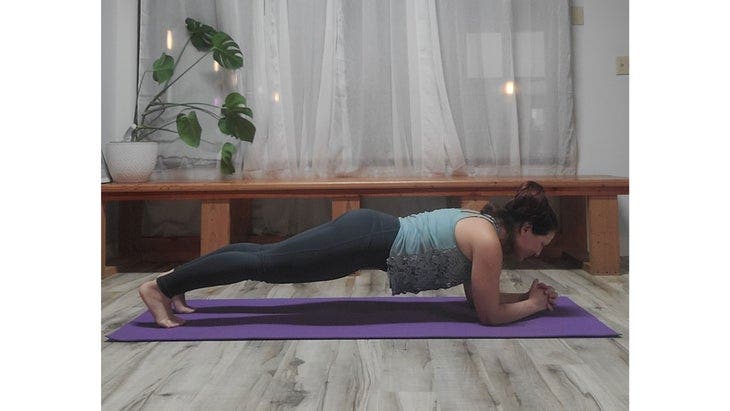
Forearm Plank
From Tabletop, shift into Plank Pose with your knees down. Set your elbows under your shoulders. Gently draw your belly button upward and inward toward your spine to engage your core (this will protect your lower back).
You may decide to tuck your toes and lift your knees. If you experience strain down the center of your abdominal muscles or downward pressure in your pelvic floor, then place your knees back down on the floor. Hold for 3–5 breaths. Over time, work up to holding this pose for one minute. Rest in Balasana (Child’s Pose) for several breaths before moving to the next pose.
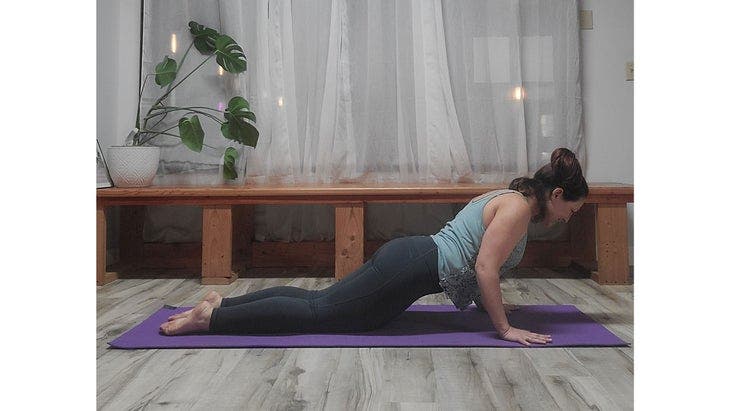
Chaturanga Dandasana, variation (Four-Limbed Staff Pose)
Move back into Plank Pose with your knees down. Place your wrists under your shoulders. Gently draw your belly button upward and inward toward your spine to engage your core (this will protect your lower back). You may decide to tuck your toes and lift your knees (again if you experience discomfort in your abdomen or pelvic floor, place your knees down).
From Plank: Bend from your elbows, lower your body halfway down, then push your body back up into Plank to complete a Chaturanga Tricep Pushup. If your knees are down, try for 8–16 Tricep Pushups. If your knees are up, try for 4 Tricep Pushups. Rest in Balasana (Child’s Pose) for several breaths before moving to the next pose.
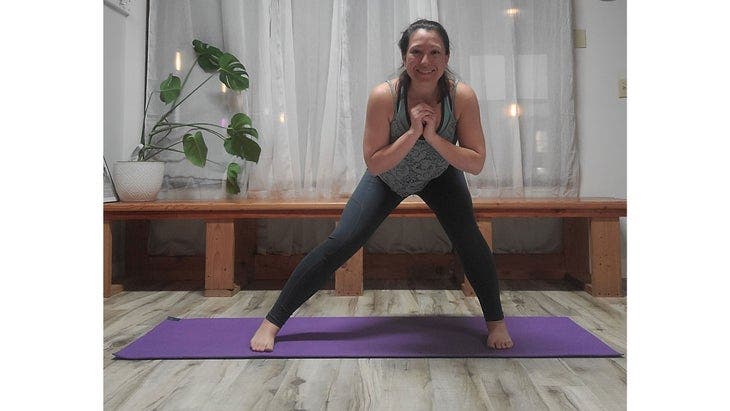
Skandasana, variation (Pose Dedicated to the God of War)
Start in standing with your legs out wide, feet parallel, and your toes pointed forward. Maintain a slight bend in your knees at all times. Shift most of your weight backward into your heels; this will help you load your weight into your gluteal muscles. Exhale and begin lunging to your right by bending more from your right knee. As you lunge, shift more of your weight to your right side. Return to center on your inhale. Bend more from your left knee, and lunge left. Flow from side to side for about 16 repetitions.
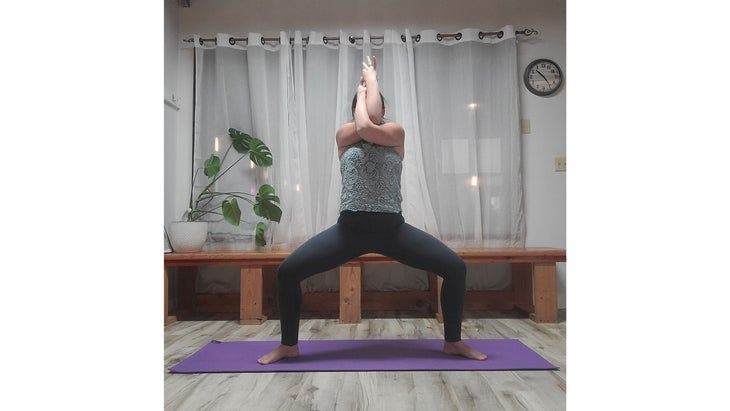
Utkata Konasana, variation (Goddess Pose)
Come into a wide stance and turn your toes slightly outward. Bend from your knees to lower your hips into a squat. Shift your weight back into your heels. Gently tilt your tailbone downward toward the earth while maintaining your natural lower back curve. Here you might notice how strong you feel in your squat, and you might experience a stretch in your hips.
Option: Add an Eagle Arm shoulder-opening stretch during your Goddess Pose hover hold. Bring your arms forward of your chest, bend from your elbows, and place your right arm on top of your left arm. Begin by giving yourself a nice warming hug. If it feels natural, you may choose to tuck your right arm into the crease of your left arm (at the bend in your elbow) to practice Eagle Arms. Gently soften your shoulders down your back. Hold for 5 full, deep breaths. Return to start position. Repeat with the opposite arm wrapped on top.
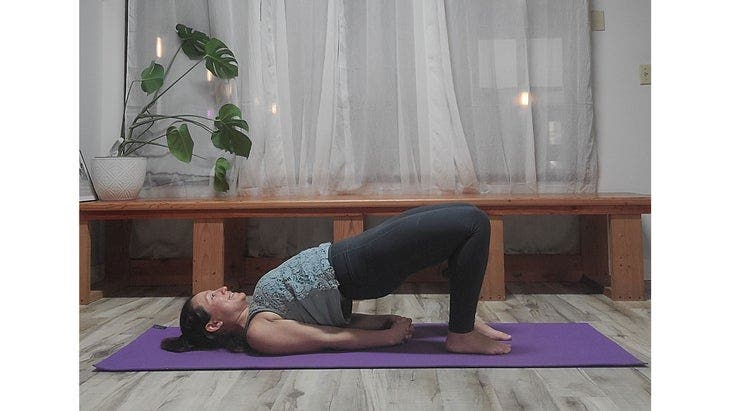
Setu Bandha Sarvangasana (Bridge Pose)
Lie on your back, with your knees bent, and the soles of your feet planted down. Draw your feet near your seat. Lift your hips, aligning your knees over your ankles. Place your palms down on the ground beside your hips.
Inhale and, beginning with your tailbone, lift your spine upward one vertebrae at a time. When you arrive in Bridge Pose, gently tuck your shoulders slightly under your body, and shift your weight mostly back into your heels. You can (optionally) interlace your hands under your low back.
In your Bridge Pose, pressing down into your heels and hugging your hips into your midline will activate your gluteal and lower back muscles. Keep lengthening through your core, and expanding through your chest. Hold for about 90 seconds. (If you’re pregnant, hold this pose for no longer than 30 seconds.) On an exhale, untuck your shoulders from under your body, and slowly return your spine downward one vertebrae at a time (your tailbone is last to meet the floor).
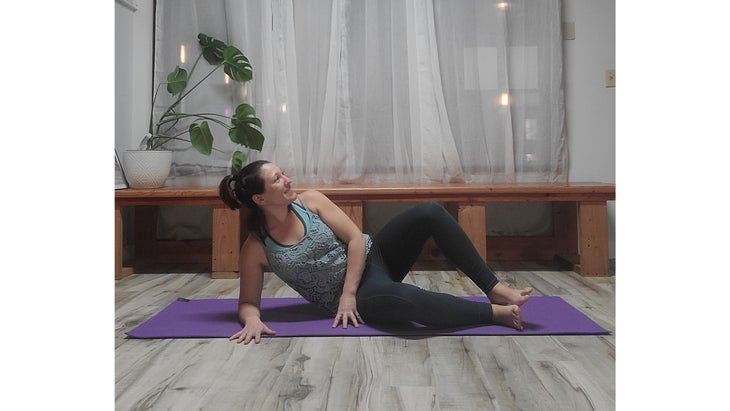
Clam Exercise
Lie on your right side. Place your right forearm down, align your right elbow under your right shoulder, and bring your left hand forward of your torso onto the ground. Keep your neck long by softly drawing your shoulders in toward your mid-back. Bend your knees to about a 90 degree angle and stack your legs on top of one another.
From here, allow your ankles to remain touching while you expand you slowly separate your knees by lifting your right knee away from your left knee. Release your right leg downward with control to rejoin your knees. This is one repetition. Repeat this exercise for 20 repetitions before switching sides. You will feel this exercise in your gluteus medius muscle on the outside curve of your bottom.
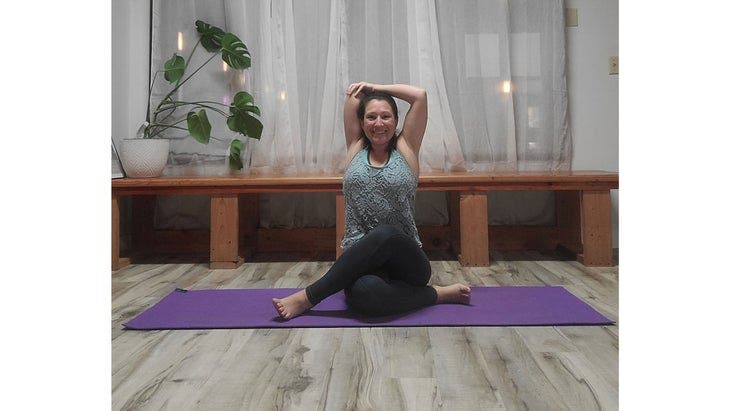
Gomukhasana, variation (Cow Face Pose)
Sit cross-legged. Bring your right leg on top of your left leg, and, if possible gently stack your knees on top of one another. You can also use a yoga blanket to fill in any space between your knees.
Draw your left arm upward overhead, bend from your left elbow, then reach your left hand down so it’s behind your left shoulder. Bring your right hand to your left elbow to stretch your tricep muscle. After 5 full and deep breath cycles, unwind your arms and legs and practice on the opposite side.
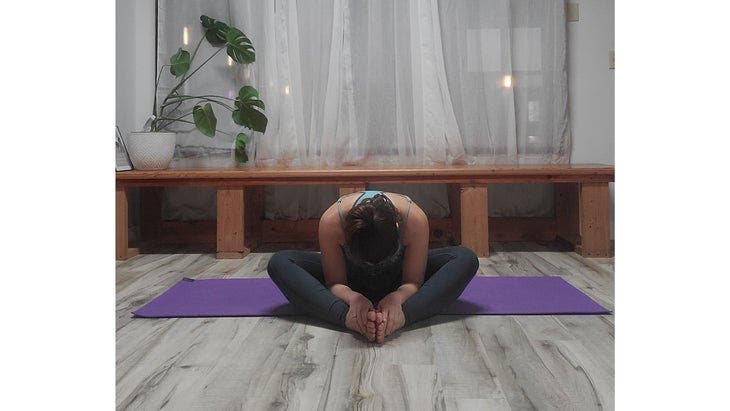
Baddha Konasana (Bound Angle Pose)
From seated, bend from your knees, and shape your legs like a big diamond by placing the soles of your feet together as your knees drop out to the sides. To experience an increased stretching sensation, hinge from your waist, and fold your torso forward over your legs.
You have the option to practice this pose on your back. If you choose to lay down on your back, and you’re pregnant, spend no longer than 90 seconds on your back. In all variations, soften your shoulders downward. As you near the end of your yoga practice allow yourself space to feel restored and relaxed. Hold for 5–8 full and deep breath cycles.
From Yoga Journal